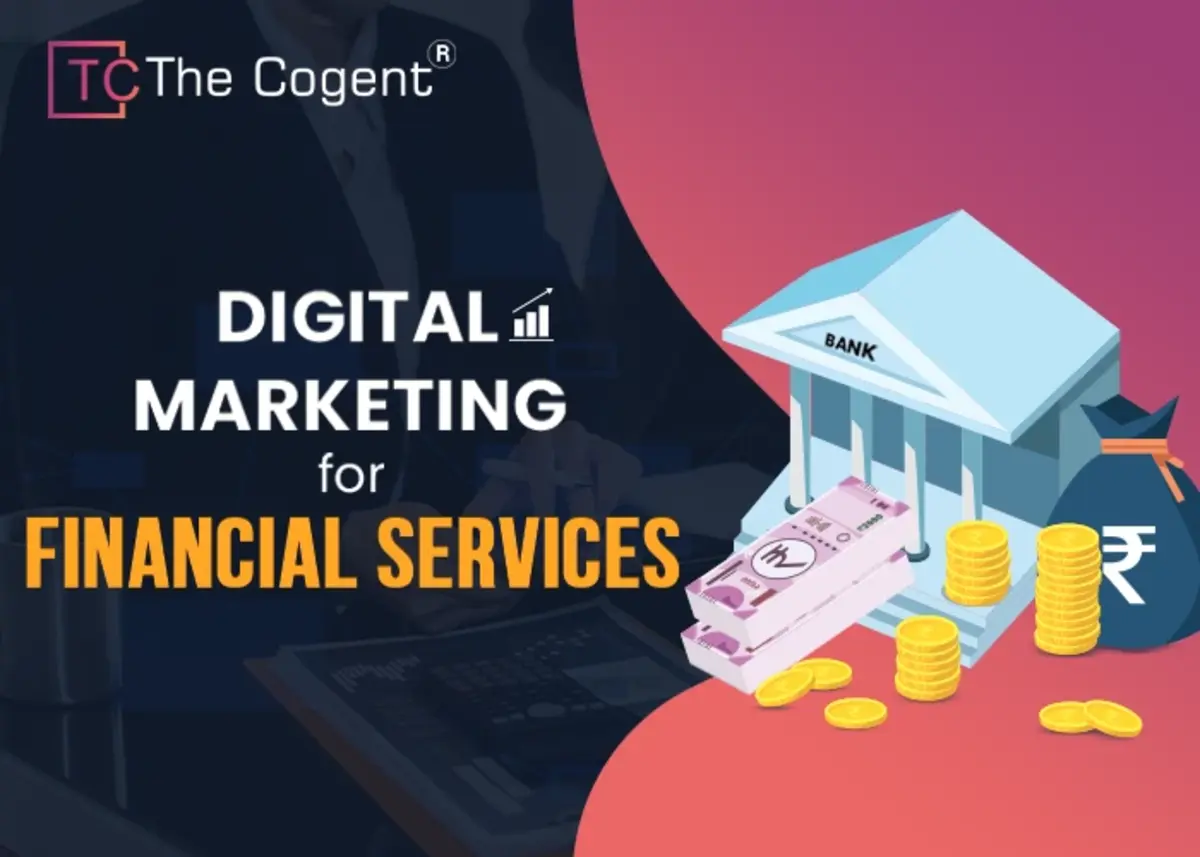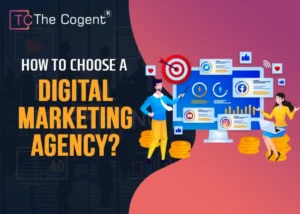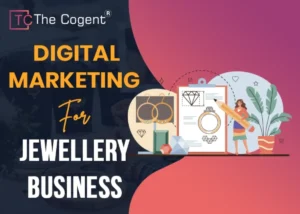In the rapidly evolving landscape of financial services, digital marketing has emerged as a critical tool for financial institutions and companies to stay competitive and reach their target audience effectively. With the advent of the digital age, the organisations of the financial sector also want Digital Marketing Strategies for themselves. Consumers are increasingly relying on online platforms for their financial needs, making it crucial for financial organizations.
In the article, we will explore the key aspects, benefits, and strategies of digital marketing for financial services to have a robust online marketing plan for your Financial Industry.
Digital Marketing for Financial Services
Consumer Experience and Engagement
In the realm of financial services, creating a seamless and engaging consumer experience is paramount. According to a report by PwC, 82% of financial institutions believe that improving the customer experience is a top priority. Digital marketing plays an important role in enhancing consumer experience by providing personalized and convenient solutions.
Financial companies can leverage data analytics to gain insights into customer preferences and behaviour. This data could be used to tailor marketing campaigns, offers, and services to meet individual needs. Personalized emails, recommendations, and targeted advertisements are some of the ways digital marketing can enhance consumer engagement.
Leveraging Omnichannel Marketing
The modern consumer interacts with financial institutions through multiple touchpoints, including websites, mobile apps, social media, and physical branches. To ensure a consistent as well as cohesive brand experience, financial companies must adopt omnichannel marketing strategies.
Omnichannel marketing enables seamless communication and integration across various channels, allowing customers to switch between them effortlessly. For instance, a customer could start a transaction on a mobile app and complete it on a desktop website without any disruptions. This continuity in the customer journey fosters trust and loyalty.
Entering New Markets with a Broader Reach
Digital marketing opens doors to new markets and audiences that were previously inaccessible through traditional marketing channels. With a well-planned digital strategy, financial institutions can expand their reach beyond geographical boundaries.
By leveraging online advertising, content marketing, and search engine optimization (SEO), financial companies can target specific demographics and regions, making it easier to tap into emerging markets and niche customer segments. This approach can result in substantial growth opportunities.
Benefits of Digital Marketing for Financial Services
- Cost-Effective: Digital marketing is providing more cost-effective than traditional advertising methods. It allows financial institutions to reach a wider audience without the hefty price tag associated with print or television ads.
- Measurable Results: Digital marketing campaigns could be tracked and analyzed in real time. This gives valuable insights into the performance of marketing efforts, enabling organizations to make data-driven decisions and optimize their strategies for better results.
- Improved Customer Targeting: Through data analytics and targeting tools, financial companies can identify their ideal customer personas and tailor their marketing messages accordingly. This precision targeting leads to higher conversion rates.
- Enhanced Brand Visibility: Establishing a strong online presence through digital marketing strategies like SEO, social media, and content marketing can significantly boost a financial institution’s brand visibility and credibility.
- Greater Engagement: Engaging with customers on social media platforms and through content marketing fosters a sense of community and trust. It also provides an avenue for direct communication and feedback.
- Competitive Advantage: In a competitive industry like financial services, staying ahead of the competition is crucial. Digital marketing allows companies to differentiate themselves and stay relevant in the market.
Digital Marketing Strategies for Financial Services
Create a User-Friendly Interface via Multi-Channel Marketing
A user-friendly interface is the basis of a successful digital marketing strategy. Financial institutions should ensure that their website and mobile apps are intuitive, responsive, and easy to navigate. Multi-channel marketing involves optimizing the user experience across various platforms, including websites, mobile apps, email, and social media.
According to a report by Deloitte, 76% of customers believe that ease of use is the most crucial characteristic of a website. Therefore, it’s essential to invest in responsive design and user-friendly interfaces to keep customers engaged.
Content Marketing
Content marketing is the most powerful tool for financial institutions to establish themselves as industry experts and provide valuable information to their target audience. Creating high-quality blog posts, articles, whitepapers, and infographics can help build trust and credibility.
Financial companies can educate their audience about various financial products, investment strategies, and market trends through content marketing. This not only positions them as thought leaders but also attracts potential customers seeking reliable information.
Mobile Marketing
Mobile marketing is indispensable in today’s digital landscape. With the majority of consumers accessing the internet via smartphones and tablets, financial institutions must optimize their marketing efforts for mobile devices. This includes mobile-responsive websites, mobile apps, and SMS marketing campaigns.
Moreover, mobile marketing can leverage location-based services to send personalized offers and promotions to customers when they are near physical branches or ATMs, increasing foot traffic and engagement.
Focus on Personalization
Personalization is at the core of effective digital marketing for financial services. By leveraging data analytics and customer insights, financial institutions can tailor their marketing messages, recommendations, and product offerings to individual preferences and needs.
Personalized emails, targeted advertisements, and product recommendations based on user behaviour can significantly enhance customer engagement and drive conversions.
SEO (Search Engine Optimization)
SEO is crucial for improving the online visibility of financial institutions. High-ranking search results on search engines like Google are more likely to attract organic traffic. Financial companies should invest in optimizing their website content for relevant keywords, improving site speed, and earning high-quality backlinks.
According to a study by HubSpot, 75% of users never scroll down the first page of the search results. Therefore, ranking on the first page is essential for capturing the attention of potential customers.
Informative Videos
Video content is a highly engaging format that can convey complex financial information in a digestible manner. Financial institutions can create informative videos explaining various financial concepts, investment strategies, and product features.
Video marketing can be used across platforms, including websites, social media, and YouTube. According to a survey by Wyzowl, 85% of businesses use video as their marketing tool, as well as 92% of marketers believe it’s an essential part of their marketing strategy.
Social Media Marketing
Social media platforms are valuable channels for connecting with customers and building brand awareness. Financial institutions can use platforms like Facebook, Twitter, LinkedIn, and Instagram to engage with their audience, share informative content, and address customer queries.
Moreover, social media advertising allows for precise targeting based on demographics, interests, and behaviours, making it an effective way to reach the right audience.
Connect with Customers
Building and maintaining strong relationships with customers is a cornerstone of success in financial services. Digital marketing provides several avenues for connecting with customers, including email marketing, chatbots, and online customer support.
Timely responses to customer inquiries and concerns, as well as personalized communication, can go a long way in fostering trust and loyalty.
Positive Customer Reviews
Online reviews and testimonials play an important role in influencing potential customers’ decisions. Encouraging satisfied customers to leave positive reviews on platforms like Google My Business, Yelp, and Trustpilot can enhance a financial institution’s reputation and credibility.
Responding to both positive as well as negative reviews demonstrates a commitment to customer satisfaction and can turn negative experiences into positive ones.
Conclusion
In today’s digital age, hiring a top digital marketing company in Jaipur is not just an option but a necessity for financial institutions and companies looking to thrive in the competitive financial services industry. By focusing on consumer experience, leveraging omnichannel marketing, and expanding their reach into new markets, financial organizations can reap the benefits of digital marketing, including cost-effectiveness, measurable results, improved customer targeting, enhanced brand visibility, greater engagement, and competitive advantage.
Implementing digital marketing strategies such as creating a user-friendly interface, content marketing, mobile marketing, personalization, SEO, informative videos, social media marketing, customer engagement, and positive customer reviews can help financial services companies stay ahead of the curve and build lasting relationships with their customers. As the digital landscape continues to evolve, staying up-to-date with the latest trends and technologies in digital marketing will be essential for long-term success in the financial services industry.



